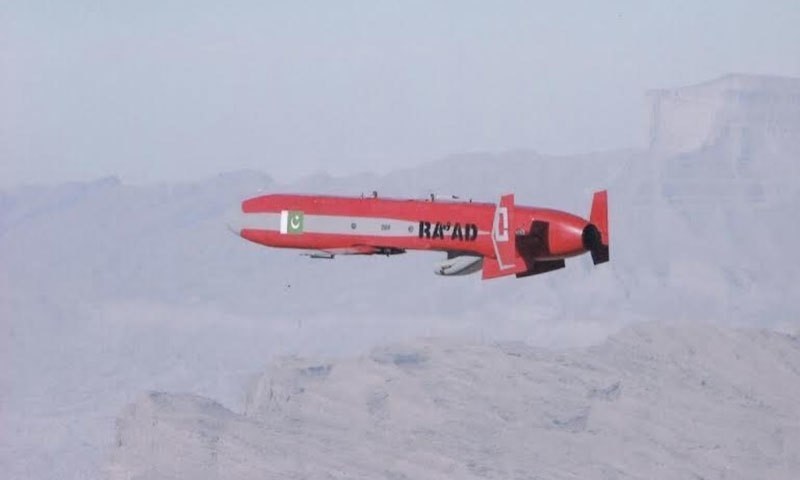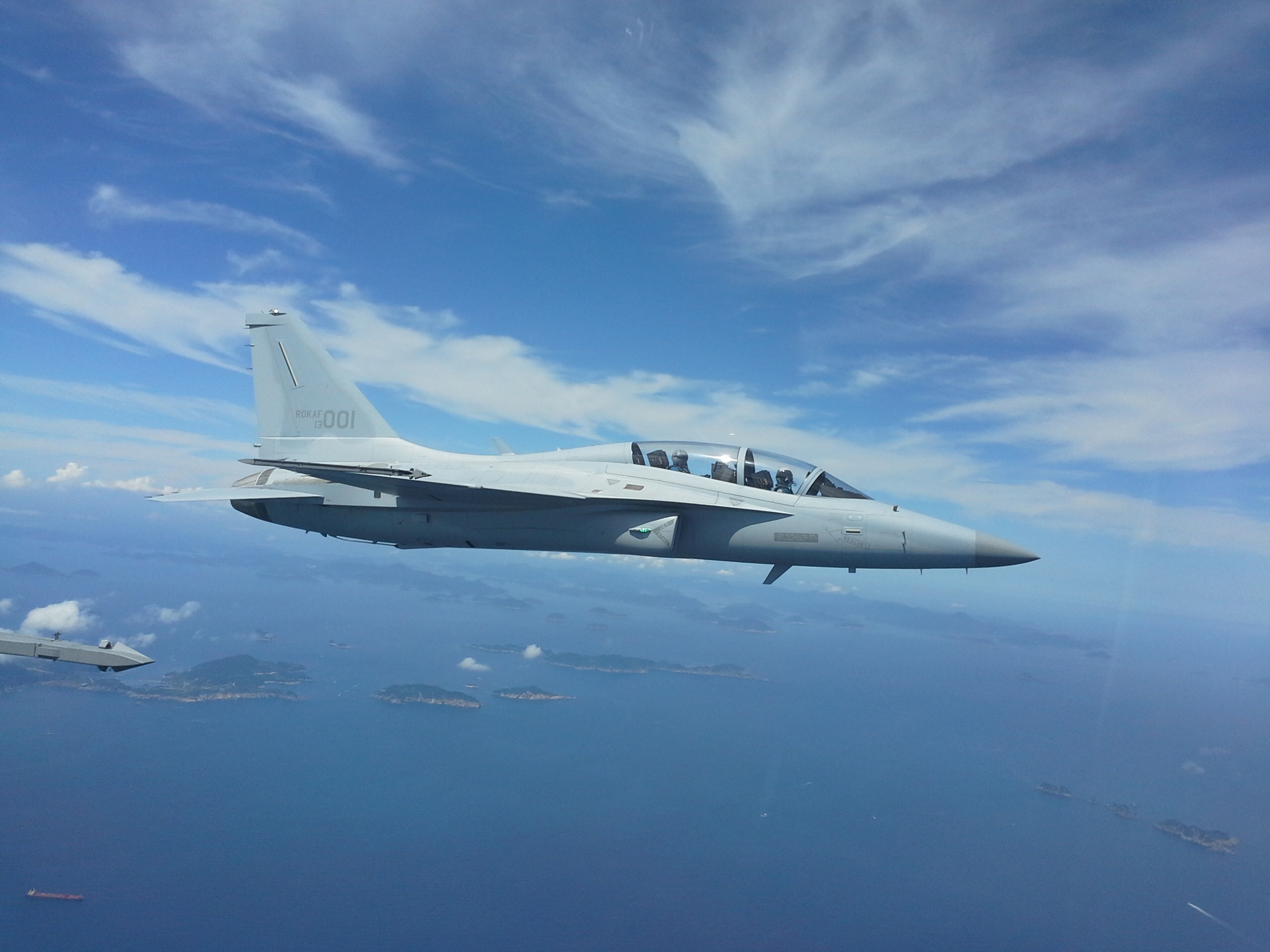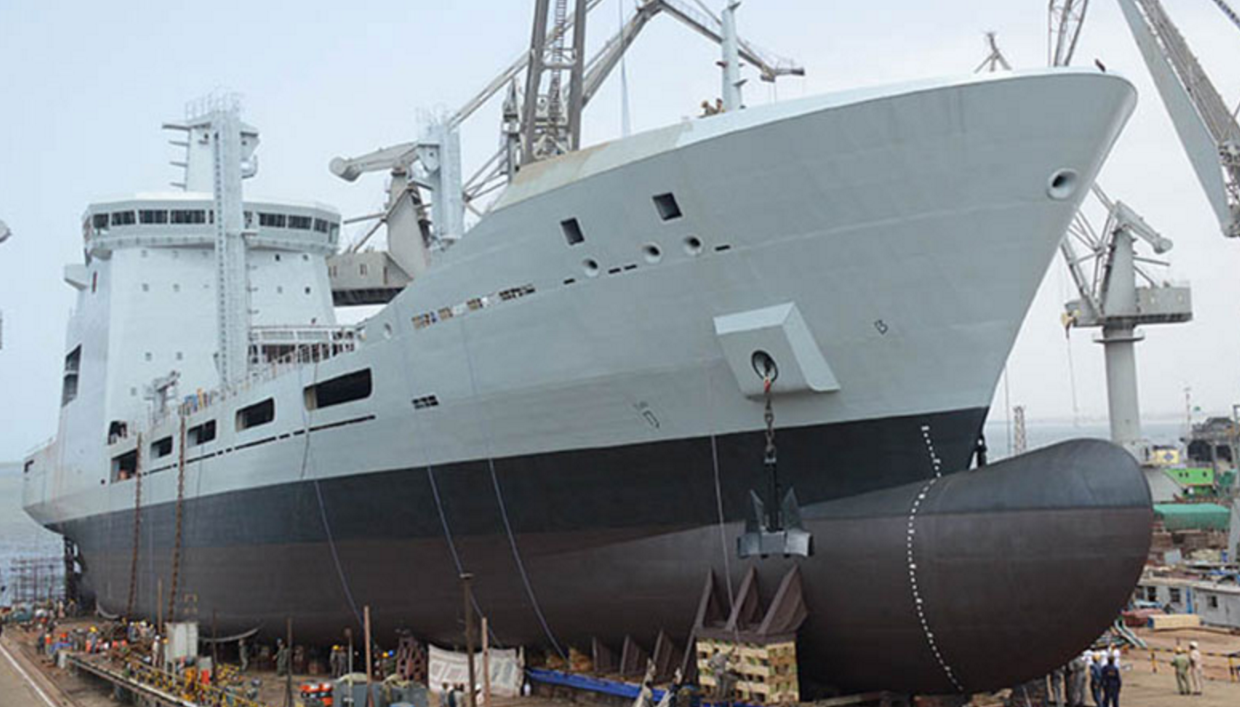2171Views 21Comments

Pakistan’s deterrence efforts in 2016 (and beyond)
Pakistan had been relatively quiet last year in terms of testing its strategic deterrence assets. The Strategic Plans Division (SPD) did undertake two land-attack cruise missile (LACM) tests in the Ra’ad air-launched cruise missile (ALCM) in January and Babur Version-2 LACM in December. However, neither Islamabad or Rawalpindi clearly signalled the intent match India’s recent advances, such as its acquisition of a locally built nuclear-powered ballistic missile submarine (SSBN) or recent (but fourth) Agni-V intercontinental ballistic missile (ICBM) test with a direct analogue or counterpart.
Functionally, Pakistan has already procured what it needs to envelop India. The Shaheen III medium-range ballistic missile (MRBM), which was last tested in December 2016, possessed a range of 2,750 km, and is sufficient to cover India. Going further by procuring an ICBM would require Pakistan to cross its self-imposed condition of “minimal deterrence”, which essentially posits that the purpose of its nuclear deterrence assets is to deter India. ICBMs would run contrary to that condition.
This is not to suggest that Pakistan would stop improving its ballistic missile inventory. While it has limited incentive to expand its range coverage, Pakistan could potentially work to improve its warhead delivery – e.g. through improved inertial navigation systems (INS) and maneuverable warheads. There is little doubt that India’s efforts to strengthen its air defence umbrella is keeping Pakistan’s SPD alert, for fruition in the opposition’s ability to intercept ballistic missiles will dent Pakistan’s nuclear deterrence efforts.
With comparatively limited work required in ballistic missile development, the bulk of Pakistan’s nuclear deterrence work had gone into tactically-oriented munitions, namely cruise missiles (e.g. Babur) and the Nasr short-range ballistic missile (SRBM). This was paired with efforts to secure miniaturized plutonium warheads, which could be deployed using the Nasr, Babur, and Ra’ad. In this respect, analysts have been paying attention to how Pakistan continues to develop its LACM capabilities and, in turn, expand the range of available deployment assets for those LACMs.
First, it will be worth observing if Pakistan succeeds in procuring longer range LACMs, either by extending the range of the Babur (700 km) and Ra’ad (350 km), or securing a new design. The incentive for longer-range LACM stems from the fact that the LACMs benefit from many delivery platforms, such as aircraft and – if the fourth Azmat-class fast attack craft (FAC) is poised to carry the Babur – even small boats. With LACMs possessing 1,000 to 1,500+ km in range, Pakistan would add depth to its deterrence inventory.
In terms of extending range, Pakistan will need to build domestic competency in miniature turbojet and turbofan development. This is contingent on organic research and development (R&D) funding. The extent of Pakistan’s organic R&D in these critical LACM technologies is not known. Considering the difficulty of procuring these systems off-the-shelf, one would expect Pakistan to begin investing (if it has not already done so) in these areas. Otherwise, the Babur and Ra’ad will not see significant change beyond their present forms. There is little sense in Pakistan to not undertake serious work in this area when LACMs benefit from flexibility in terms of deployment platforms and conventional usage. The latter is important because it contributes to Pakistan’s stand-off engagement capability, providing it the ability to strike distant targets within enemy territory from within its own borders. There are few areas that Pakistan can fully commit to organic R&D, and in turn absorb technical failings and iterative updates, and LACMs would be a top contender for such funding. Interestingly, the U.S. placed sanctions on Pakistani entities engaged in LACM work, namely the National Engineering and Scientific Commission (NESCOM) and Air Weapons Complex (AWC). Thus, it is plausible that the U.S. believes that additional LACM R&D activities in Pakistan are underway, enough to necessitate sanctions (to prevent U.S. firms from contributing to the effort).
In parallel with adding depth to its India-centric deterrence inventory, Pakistan will work to increase the number of available deployment assets. Because of their small size and relatively light weight, LACMs can be deployed from a wide range of platforms, including fighter aircraft and small surface warships. This is pivotal for Pakistan’s efforts to build a naval deterrence leg; LACMs can, theoretically, be deployed from the Pakistan Navy’s conventional submarine and surface fleet assets. There are possible hints of such work taking place, most notably with the fourth Azmat-class FAC, which is shown exhibiting a revised 2×3 anti-ship missile (AShM) launcher in lieu of the 2×4 AShM. This indicates that the fourth Azmat FAC could carry a larger and heavier missile, potentially the C-602, but the Babur as well.
Considerable attention had been paid to Pakistan’s recent purchase of eight new-built air-independent propulsion (AIP) submarines (SSP) from China. The specifics are not known, but it appears that the SSPs are being procured to bolster Pakistan’s anti-access and area-denial (A2/AD) capabilities. With AShM and heavyweight anti-submarine warfare (ASW) torpedoes, these SSPs will be used to guard Pakistan’s coasts and coastal assets (e.g. shipyards) and, potentially, undertake limited interdiction roles along Pakistan’s sea-lines-of-communication (SLOC) or sea lanes. It is unlikely that these SSPs are being bought for a primary deterrence role, but deterrence can be a secondary role. Success in this area is contingent on Pakistan’s ability to secure a submarine-launched cruise missile (SLCM). Developing an SLCM, be it a variant of the Babur or a new design, will depend on Pakistan’s organic R&D in this area.
India’s procurement of several nuclear-powered submarines, such as the domestically built INS Arihant nuclear-powered ballistic missile submarine (SSBN), has lent some circles to question if Pakistan would acquire an analogous solution. Unlike SSPs, an SSBN would be a dedicated deterrence asset. Functionally, it has little purpose beyond deploying SLCMs and submarine-launched ballistic missiles (SLBM). SSBNs are technically complex and expensive systems. Procuring one would require Pakistan to manage more than just the acquisition costs, but also the cost of maintenance, managing acoustic signatures, and keeping a track on safety (from the miniaturized nuclear reactor and nuclear-tipped munitions).
SSBN users have been able to tolerate these drawbacks and improve upon them because SSBNs offer long-range strategic attack capabilities, but Pakistan’s geographic proximity to India does not necessitate such a capability. The added cost and complexity of procuring that capability is also unnecessary. Money going into an SSBN (or two) is money being taken away from SSPs or other programs, such as frigates. It is unlikely that Pakistan will deprecate general capabilities (via additional SSPs and frigates) to acquire a dedicated deterrence asset that cannot be utilized for A2/AD or SLOC protection.
Overall, Pakistan’s greatest gains would be seen in enhancing its cruise missile technology, such as range extension, and adding conventional assets – such as SSPs and combat aircraft – capable of deploying cruise missiles. Investment in these areas bolster Pakistan’s conventional and deterrence elements collectively, thus saving it from the prospect of having to spend on one while sacrificing the other.



21 Comments
by SP
Shaheen 3 range should be extended by about 1000 km so that we can comfortably cover our enemies from maximum distance comfortably with a little margin to spare.
Pakistan should not cave in to US pressure not to extend range.
If the statement that the US imposed sanctions due to work on extending range of missiles like Babur is true then it suggests extensive agent network and technical spying within Pakistan. Pakistans counter espionage activities need to expand assistance from Russia may be invaluable in this respect. However personally I believe the reason for the sanctions to be different, but whatever the rational for sanctions, they must not be allowed to intimidate Pakistan and should further increase its resolve to take the programme to the next level.
by Qasim57
I for one really hope our SSKs/SSP subs have the range + endurance to operate across into India’s eastern seaboard (Bay of Bengal and the Andaman sea).
India seems to expect a “multi-layered” ballistic missile defence system to prevent our missiles from reaching the Andaman islands (where India’s based alot of their command & control infrastructure, these islands were India’s furthest territory away from Pakistan and out of our range before Shaheen-III).
Having subs that can operate across India’s eastern seaboard makes their strategic planners factor it in that our missiles can totally avoid any missile-defence system/s.
by Shakeel
No SSK and SSP have that kind of endurance especially not the kind we have only conventional sub that can go that far with any meaningful mission before their supplies or fuel runs out is the short fin barracuda to be built by France for Australia and that is a tone downed nuclear SSN with worlds most advanced propeller less propulsion and they cost a whopping 54 billion $ that’s 11 times our defence budget.
And even if by some magical power we can deploy subs that far with such a few numbers and it will be atleast a decade before we ever see the Chinese sub joining PN in any meaningful way wouldn’t that leave our coast line and surafce fleet vulnerable to enemy subs and ships???
What we need to do is be realistic and pragmatic and focus on coastal defence make a impregnable defense so Karachi like attack can’t be repeated and also have capability to deter any sea route blockade by IN though that would depend where they want to create the choke point but we must have capability to atleast protect our SLOC.
If you want to strike so far than perhaps getting a SSN or kick starting a SSBN would be way to go cruise missiles even if nuclear tipped hardly pose any worthy threat to enemy In a nuclear war if we are serious about second strike capability we need SSBN.
by Qasim57
i don’t think it’s logistically *that* impossible for Pakistan to operate in the Bay of Bengal.
It’s roughly ~2200km from Karachi to Colombo (Sri Lanka), and roughly 4000km from Karachi to the Bay of Bengal.
I’m not sure what the operating-radius for the Type-041A (or S20, whichever configuration we get) is. For the German Type-216 it aims for “10,400 nautical miles (19,300 km). Endurance: 80 days”.
by Salman Khan
The news just came. Pakistan finally tested submarine launched cruise missile Babur!
by Abdul Rashid
Yeah!
https://www.thenews.com.pk/latest/177892-Pakistan-tests-first-submarine-launched-missile
by Bilal Khan
Clearly, they did in response to this article.
by Abdul Rashid
Hehe, oh sure no doubt! Likewise, in response to Quwa, let’s hope tomorrow we hear new of PAF procuring Su-35!
by Salman Khan
lol We wish too that our cherry input and comments on the defence status of our country on this site inspires action from their behalf ^_^ I think Pakistan tested Babur because of the recent Agni tests.
by Shakeel
Hey up, somebody cloned my name (Shakeel). Can you go under a different disguise?
by bill
I want clarification about use of Babur CM as it is mentioned that it can be used for dual role i.e both against ships and land targets.
Thus one may consider that it will be installed on future platforms for dual role if true than even 700 KM range is enough to deter any adversary including IN.
by nob hamid gul
From Which Submarine the missile could have been fired?
by Superior Shakeel
Ofcourse its not impossible and we can do that for the sake of doing it sure without ever studying or surveying we can go close to highly muddied bay of Bengal and possibly walk into a designed mine field.
Subs especially don’t go that far and it’s always not for the lack of endurance and range for a effective mission parameters must be defined before hand contingencies planned before hand which require huge amount of oceanographic data and surveys especially for a sub which apart from arabian sea PN never has undertaken or had the capability to do so.
Also we must get the German type 216 then because reported range of s20 is 7000 NM at 16 knots and endurance of 60 days so we can probably send out subs for a day or two vacation in bay of Bengal and leave our shoreline and surface fleet defense less.
If you want to strike andaman we need a heavy plane with twin engines with decent load carrying capacity and long range CM to strike them.
by Superior Shakeel
This was actually tested in 2015 believe it or not but only reveled now as a message to the world.
1) they just sanctioned our strategic institutions
2) their Afghanistan op general was on a visit to Pakistan
3) India tested their ICBM and china supported the stance of increasing our capabilities.
The range is much more than described and this was not from agosta’s take it what you will from that.
by Syed
Heard that they had the second strike capability for 3 years,they just didn’t want to advertise it,but mr Obama went on a sanctions spree so no need to hide it now
by mazhar
Mr. Abdul Rashid—If we secure SU-35, I owe you mithai, personally. Let’s see if Bilal let this comment go through.
by mazhar
Bilal, please right another article for SU-35. You never know if they react to that too.
by jamshed_kharian_pak
MashaAllah excellent News
by Qasim57
A heavy plane with twin engines & decent payload would need to cross mainland India with dense SAM coverage.
Even our Ballistic missiles would need to cross many layers of Ballistic Missile Defence shields. India’s policy-makers ignorantly seem to think multi-layered BMD would save command & control bases on Andaman islands (which actually they won’t, in a saturated attack).
But still, the *ability* to bypass any SAM or BMD defences on Indian territory and launch strikes from the Bay of Bengal would be valuable.
by Heart Breaker
This is a major development, major breakthrough. Thanks and congrats to
those who worked for this achievement. Long live Pakistan!
by Steve
I said in an earlier post sanctions can only be lifted if you have leverage. That means negotiations for limiting your missile range below 5000 and limiting yield of thermonuclear devices to below 200KT. You have to have them to offer to limit them, if the sanctioning country wants to see sense…if they don’t then up to the next level you are better off anyway. A win win.